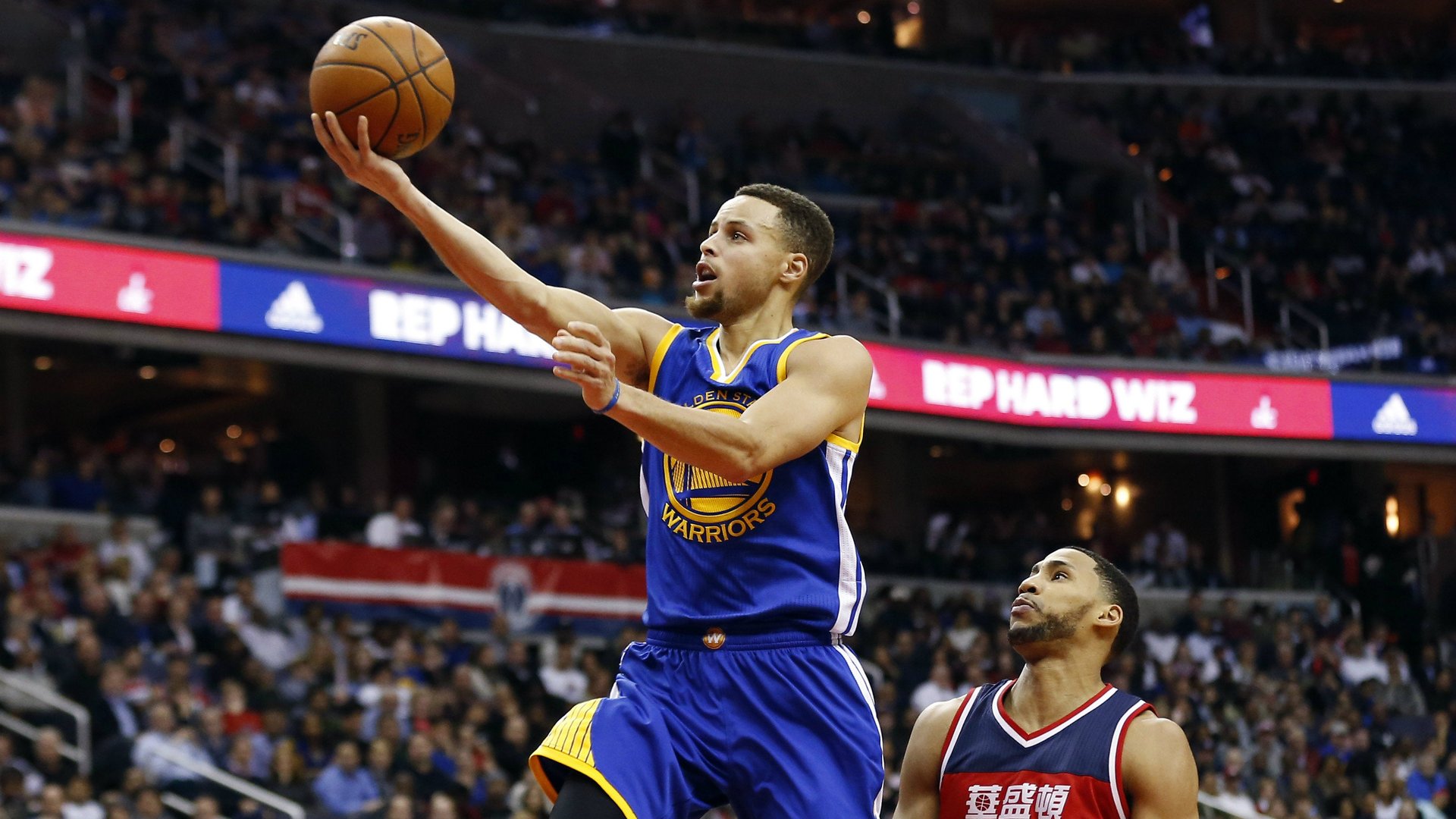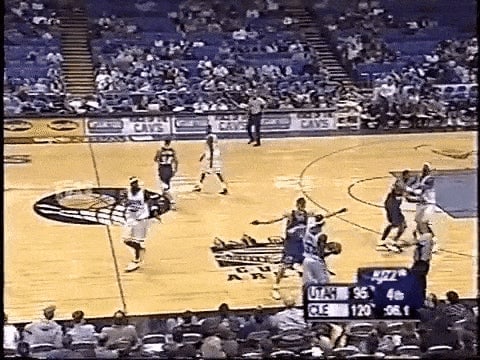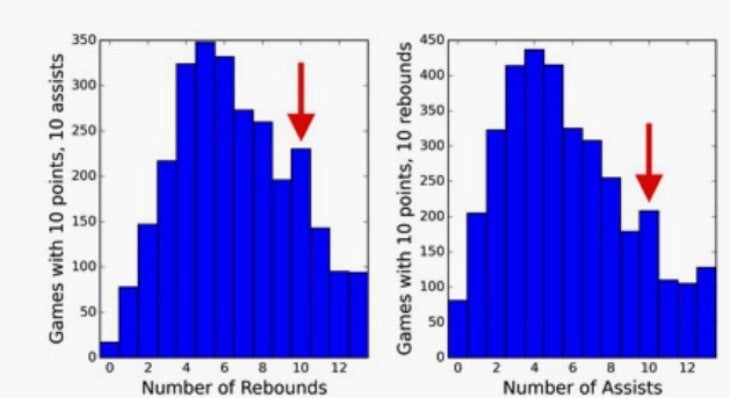These statistical models predict when Steph Curry’s streak will end
Steph Curry recently set a basketball record for most consecutive games (128) with at least one 3-pointer. “I have a hard time seeing how that streak is ever going to end,” one coach said, because Curry’s playing at a level no one’s ever seen before; LeBron James called him “ridiculous.” We are Bay Area basketball fans, so we love Steph Curry; it would warm our hearts to believe we could always go to sleep knowing he’d hit at least one three. But we’re also math nerds, so we had to see whether the numbers supported our happy fantasy.


Steph Curry recently set a basketball record for most consecutive games (128) with at least one 3-pointer. “I have a hard time seeing how that streak is ever going to end,” one coach said, because Curry’s playing at a level no one’s ever seen before; LeBron James called him “ridiculous.” We are Bay Area basketball fans, so we love Steph Curry; it would warm our hearts to believe we could always go to sleep knowing he’d hit at least one three. But we’re also math nerds, so we had to see whether the numbers supported our happy fantasy.
Unfortunately, they don’t. Here’s a simple argument: Curry’s had 14 games in his streak where he scored only one three. That makes the streak look awfully fragile: one three is as close as you can get to no threes. To make this argument a little more rigorous, we fit two mathematical models, Poisson and negative binomial [Note: We fit the models using data from Curry’s streak of 128 games—note that this is generous, since we truncated the data at the game where he didn’t get a three. Both models fit the data reasonably well. All numbers are based on games Curry played through Feb. 25, 2016. Since we did this original analysis, Curry has played several more games, including a loss to the LA Lakers in which he hit only one three.] to predict how often Curry might have a game where he scored no threes. These models are commonly used to predict the probability of seeing a certain number of events in a certain period of time—for example, the probability California will have two large earthquakes in the next year. We can use them to predict the probability Curry will score no threes in a game, given his usual rate of making threes. One model predicts that Curry will score no threes once every 69 games, and the other predicts he’ll score no threes once every 42 games. If we use data from just this season (since Curry’s improved), the numbers are better: One model predicts he will score no threes once every 151 games, and the other every 103 games. But either way, the models don’t imply the streak will last forever.
But take hope: When our numbers tell us something we don’t like, we try to think of reasons why they’re wrong. First, Curry might be improving so dramatically that using his historical data doesn’t predict his future performance. (On the other hand, he also might suffer an injury which takes him out of the game or hurts his shooting ability.) Second, Curry might put in special effort to get a three in games where he hasn’t scored one yet, to delight his fans or inspire his teammates. Our models assume that he does not do this.
We couldn’t find evidence for the second possibility. We looked at the minute-by-minute record of every game, and found no sign, for example, that Curry kept shooting until he got at least one three.
This made us wonder about a broader question: Do other NBA stars ever play in a way specifically designed to try to achieve impressive individual statistics (like streaks) rather than helping their teams? Individual players have been accused of this, but it isn’t easy to prove mathematically: for example, a player who scores a ton of points may be doing what’s best for his team, not just trying to make himself look good.
We found clear evidence that other NBA stars sometimes pad their stats rather than helping their teams by looking at a coveted basketball achievement: the triple-double. A player achieves a triple-double by getting at least 10 in three different categories: for example, at least 10 points, 10 assists, and 10 rebounds. Players sometimes do crazy things—things that hurt their team—to get triple-doubles. Here’s a famous moment where Ricky Davis (in white) deliberately takes a shot on his own basket in order to get the final rebound he needs for a triple double. (The other player is so annoyed that he pushes Davis.)

Rarely do players do anything that obvious—but statistics allow us to pick up on subtler signs. When we looked at players who got a lot of triple-doubles, we found clear evidence that they were deliberately trying to get them. We examined games where they got at least 10 points and 10 assists, and looked at how many rebounds they got. If players were deliberately trying to get triple-doubles, we would see an unusual number of games where they had exactly 10 rebounds, and that’s exactly what we did see (left graph). The effect was actually pretty dramatic: we saw a third more games where players had exactly 10 rebounds than we would expect to. And we saw the same pattern when we looked at assists (right graph). We would never see the spike at 10 if players were just trying to help their teams: they are deliberately changing their play in order to earn triple-doubles.

This is why no one likes nerds: math kills beautiful dreams. Steph Curry’s streak will end some day, and other NBA stars are padding their stats. And we wondered why we never made friends in middle school.